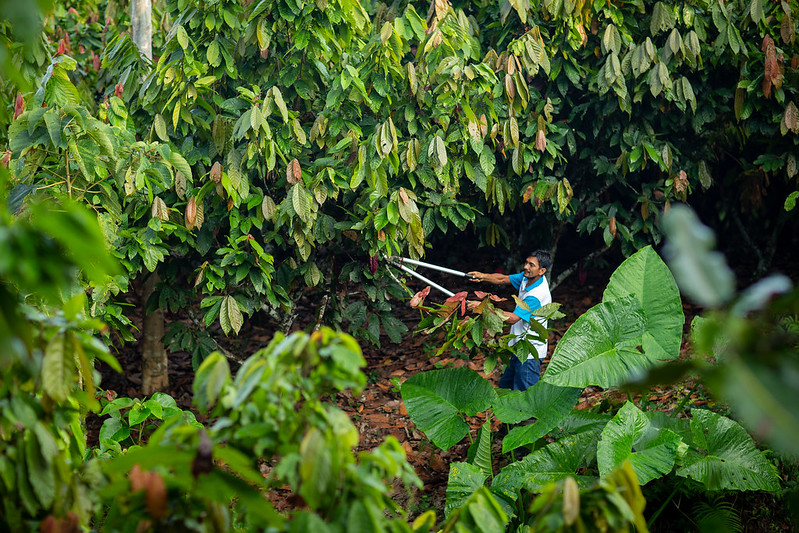The world is experiencing a water crisis. Many people worldwide are facing water and food insecurity, challenges that often go hand-in-hand. Low-income countries face the greatest water-related challenges: increased water demand for food production, a growing population, and higher vulnerability to climate variability.
Can agroforestry provide solutions to these problems? A recent report by Agroforestry Network highlights the benefits of agroforestry systems for water management.
Agriculture is the main consumer of freshwater worldwide, totaling 70% of global freshwater withdrawals from lakes, rivers, and groundwater. Our food production needs to become more sustainable and less water-intensive to meet the global population’s demand without putting more strain on our ecosystems and their services. By harnessing the effect of trees on the water cycles, agriculture can become more sustainable and resilient. Agroforestry is one way to achieve these goals.
Trees help regulate water availability in many different ways. On the landscape scale, greater tree cover can increase precipitation. This occurs when tree canopies catch raindrops before they hit the ground, increasing evaporation, and when plants ”sweat”, releasing groundwater to the air, a process called transpiration.
On the local scale, trees help soil absorb and store water, binding carbon in the ground, restoring soil fertility. Tree roots filter groundwater. So, by cultivating land with agroforestry, farmers can increase water availability, reducing irrigation needs, and boosting resilience.
With the recent launch of the United Nations Decade on Ecosystem Restoration examining the ways to restore ecosystems is as timely as ever. Besides being implemented on agricultural land, agroforestry also offers a possibility for landscape restoration at scale. Many degraded forest landscapes can be restored through mosaic restoration, which pursues both ecological and societal goals. Agroforestry can improve agricultural productivity, boosting both food security and incomes, while restoring ecosystems and revitalizing biodiversity.
However, it is important to stress that merely planting trees is not a universal solution. Agroforestry and restoration need to be tailored to local ecological and social realities. Choosing optimal tress species and amount of tree cover is paramount for the success of agroforestry projects. Non-local species that adapt poorly to the landscape can lead to greater water scarcity through excess water consumption. Tree species should be symbiotic with their companion crop species by providing the right amount of shade or sunlight to avoid hindering crop growth.
Agroforestry models can also be tailored to the goals of landscape restoration. For example, greater tree species diversity can lead to greater biodiversity on the landscape scale. An additional challenge with agroforestry can be the high start-up costs, which emphasize the need of a supportive policy environment.
What does this mean for policymakers?
National policies and strategies need to incorporate agroforestry. It can support the implementation of the national goals related to restoration and water scarcity and other targets outlined in the Paris Agreement, Bonn Challenge and Agenda 2030. Policies can support agroforestry by promoting cross-sector opportunities for improving water availability and sustainable land-use. Well-implemented agroforestry projects allow farmers to boost their productivity, increase resilience and improve water availability. By addressing local challenges for farmers, policymakers can help them manage local aspects of global challenges such as
climate change and water scarcity.
Download the brief and read more about how agroforestry can be used to tackle global water issues.
